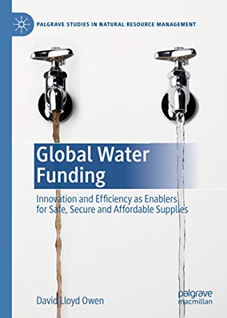Global Water Funding
Innovation and Efficiency as Enablers for Safe, Secure and Affordable Supplies
David Lloyd Owen
2020
https://link.springer.com/book/10.1007/978-3-030-49454-4
Palgrave Macmillan
Is safe and sustainable water and sanitation for all an unaffordable pipedream? This book reviews the worldwide development of water and sewage services and the challenges to be faced in meeting Sustainable Development Goal 6 (SDG6) along with climate change, population growth and urbanization. A global database, covering infrastructure, service delivery and economics provides detailed estimates of the costs involved, along with current and future funding flows and the gap between the two. Current progress towards SDG6 points to serious shortfalls by 2030, due to weak policy implementation, staff shortages and a lack of funding. This book outlines how innovation in hardware development, procurement and installation and in how networks are operated and managed can address funding gaps to realistically deliver SDG6 by 2050.

SDG6 will not be achieved by 2030. The management and financial capacity needed simply does not at present exist in most countries. Nevertheless, universal, safe and sustainable access to water and sanitation by 2050 is attainable.
Water and sanitation spending needs globally between 2015 and 2050 and the funds available through tariffs, debt finance and Official Development Assistance are quantified. The potential impact of capital and operating spending efficiency along with measures such as demand management can significantly reduce or even eliminate these funding gaps. Under all efficiency scenarios, the most important element is developing tariffs that charge customers using either the sustainable or full cost recovery principle. By far the greatest challenges are to be found in Sub-Saharan Africa and South Asia.
Hardback, 401 pages